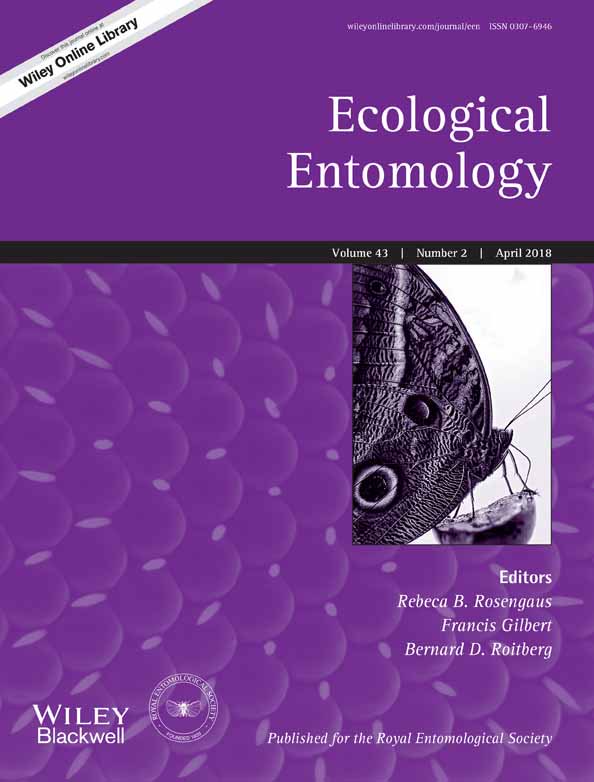Ver ítem
- xmlui.general.dspace_homeCentros e Institutos de InvestigaciónCICVyA. Centro de Investigación en Ciencias Veterinarias y AgronómicasInstituto de GenéticaArtículos científicosxmlui.ArtifactBrowser.ItemViewer.trail
- Inicio
- Centros e Institutos de Investigación
- CICVyA. Centro de Investigación en Ciencias Veterinarias y Agronómicas
- Instituto de Genética
- Artículos científicos
- Ver ítem
Coexistence between two fruit fly species is supported by the different strength of intra- and interspecific competition
Resumen
1. Unravelling the strength and modes of interspecific interactions between
resident and introduced species is necessary in order to understand the basis of their
coexistence or the displacement of the former by the latter. In Argentina, the indigenous
Tephritidae fly Anastrepha fraterculus overlaps its distribution and host fruit with the
introduced species Ceratitis capitata.
2. This study focused on the relative strength of intra- and
[ver mas...]
1. Unravelling the strength and modes of interspecific interactions between
resident and introduced species is necessary in order to understand the basis of their
coexistence or the displacement of the former by the latter. In Argentina, the indigenous
Tephritidae fly Anastrepha fraterculus overlaps its distribution and host fruit with the
introduced species Ceratitis capitata.
2. This study focused on the relative strength of intra- and interspecific competition
during the larval stage as a potential factor supporting coexistence. Classical competition
experiments (addition and substitution) were conducted between larvae of the two
species reared in artificial larval diet. The study evaluated whether a temporal separation
between oviposition events affects the outcome of the competition.
3. When both species started to consume the resource at the same time, A. fraterculus
experienced a negative effect in larval survival, pupal weight and duration of larval stage,
while for C. capitata, pupal weight decreased. When A. fraterculus started feeding 1 day
earlier than C. capitata, the negative effects became milder, and when the temporal
separation increased, these effects were reversed. Substitution experiments showed an
increase in pupal weight when larvae had to share the resource with heterospecific larvae,
and showed negative effects suffered for both species when they shared the resource with
conspecific individuals.
4. These results suggest that intraspecific competition is stronger than interspecific
competition, and a differential oviposition preference could generate an asynchrony
of these species in nature. Such mechanisms could favour coexistence between A.
fraterculus and C. capitata in an environment previously occupied only by the former.
[Cerrar]

Autor
Liendo, María Clara;
Parreño, María Alejandra;
Cladera, Jorge Luis;
Vera, María Teresa;
Segura, Diego Fernando;
Fuente
Ecological entomology 43 (2). (April 2018)
Fecha
2018-04
ISSN
1365-2311
Formato
pdf
Tipo de documento
artículo
Palabras Claves
Derechos de acceso
Restringido
 Excepto donde se diga explicitamente, este item se publica bajo la siguiente descripción: Creative Commons Attribution-NonCommercial-ShareAlike 2.5 Unported (CC BY-NC-SA 2.5)
Excepto donde se diga explicitamente, este item se publica bajo la siguiente descripción: Creative Commons Attribution-NonCommercial-ShareAlike 2.5 Unported (CC BY-NC-SA 2.5)

